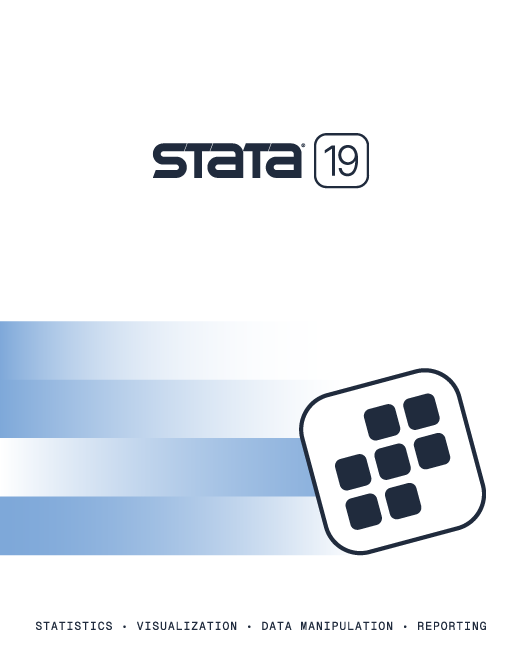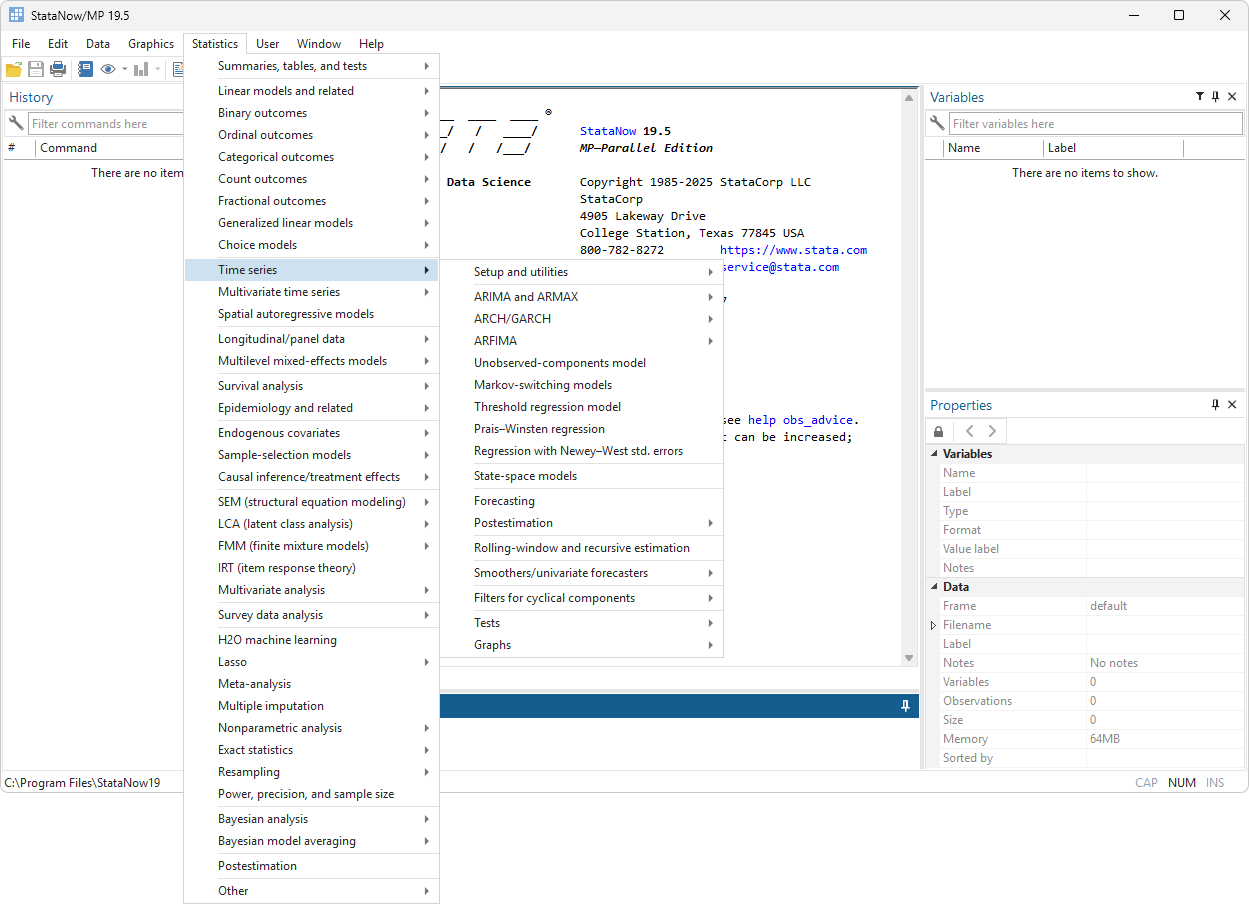
See what's new in time series.
Regression with AR(1) disturbances
Unobserved components model (UCM) ![]()
Graphs and tables
Time-series time and date formats ![]()
Support for Haver Analytics database ![]()

Tests for white noise
Tests for unit roots
Rolling and recursive estimation ![]()
Additional resources
See tests, predictions, and effects.
See New in Stata 19 to learn about what was added in Stata 19.